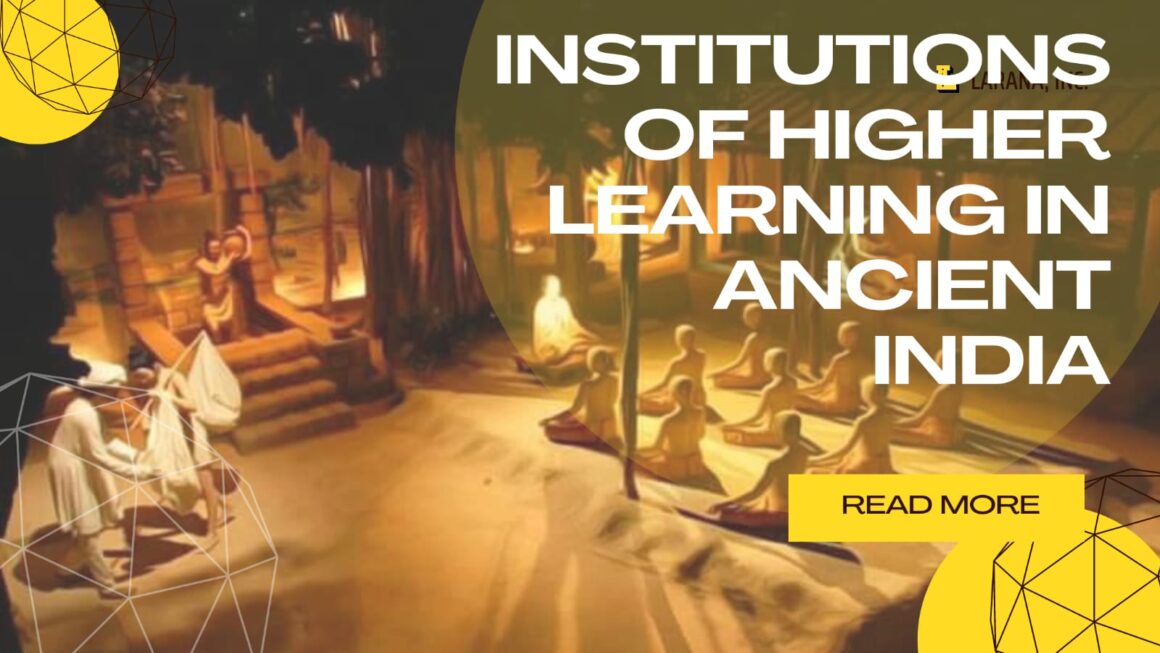Some of the oldest and most famous educational institutions in the world, found in ancient India, were responsible for the transmission of knowledge over centuries in a variety of fields, including politics, astronomy, medicine, philosophy, and religion. Gurukulas, or residential schools where students lived with their professors and learnt through close mentorship, were a distinctive feature of the educational system in ancient India. Gurukulas were very important for the spread of knowledge, but over time, monasteries and other sacred places became to resemble more formal, university-like establishments. In this article, we examine the rich history of higher education in ancient India, with particular attention paid to several of the country’s most well-known educational institutions, including Takshashila, Nalanda, Vallabhi, Mithila, Odantapuri, and Somapura.
Takshashila (Taxila): The World’s First University
Takshashila, also known as Taxila, was one of the most famous universities in ancient India and It is the oldest university in the world. Prince Bharat established the city, who named his son Taksha as the ruler, according to Valmiki’s Ramayana. located in what is now Pakistan’s northwest.
The renowned scholar Chanakya, also known as Kautilya, is credited with penning his ground-breaking book, the Arthashastra, a treatise on statecraft, economic policy, and military strategy, at Takshashila, which was widely known for its academic reputation. Notable academics who also went through Takshashila include the Buddha’s physician Jivaka, the grammarian Panini, the famous physician Charaka, and the author of the Panchatantra, Vishnu Sharma.
Nalanda: The Flourishing of Buddhist Learning
Takshashila is the world’s first university, but Nalanda is in now Bihar, became one of the most illustrious Buddhist universities in history. There were 10,000 students and 2,000 teachers, drawing scholars from as far afield as China, Korea, Japan, Tibet, Mongolia, and Sri Lanka. The university’s curriculum covered a wide range of subjects, including Buddhism, philosophy, mathematics, astronomy, and medicine. One of its most well-known pupils was the Chinese traveler Xuanzang, who spent several years studying and teaching at Nalanda.
Vallabhi: A Rival to Nalanda
Located in the modern state of Gujarat, Vallabhi was another well-known Buddhist university that existed at the same time as Nalanda. Vallabhi, a prominent center of learning founded in the sixth century CE, was especially well-known for its emphasis on secular disciplines like law, administration, and commerce. The university produced a number of well-known academics and administrators and drew students from all over the Indian subcontinent. Vallabhi, a prominent intellectual center in western India, has its own unique traditions despite some similarities with Nalanda.
Mithila: The Seat of Hindu Scholasticism
Apart from the Buddhist universities, there were also Hindu educational institutions such as Mithila (in modern-day Bihar), which gained prominence for its contributions to the study of Nyaya (logic) and Hindu philosophy. Mithila was famous for its intellectuals and the profundity of its philosophical discussions. Some of the greatest logicians and philosophers in Indian history were graduates of the university.
Odantapuri and Somapura: The Sacred Centers
Just like Nalanda, the Pala king Dharmapala found Somapura in the 8th century CE in Bihar. Like Nalanda, it was a renowned center of learning that catered to students from diverse regions and backgrounds. Unfortunately, like Nalanda, it was destroyed during the Turkish invasions in the 12th century. Another important Buddhist university that emerged around the same time as Nalanda was Odantapuri, the Pala king Gopala I found in the 8th century CE in Bihar.
Try UGC NET Mock test and achieve your goal!

